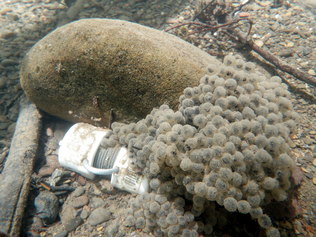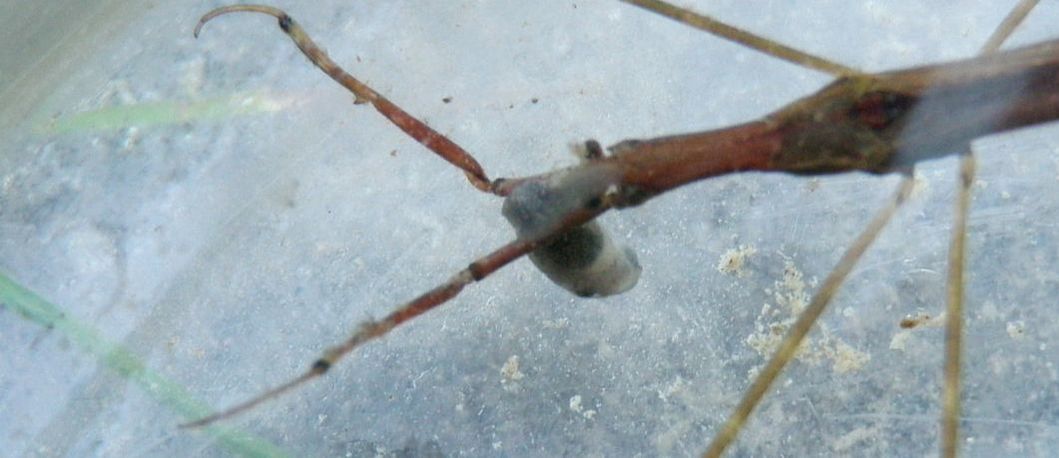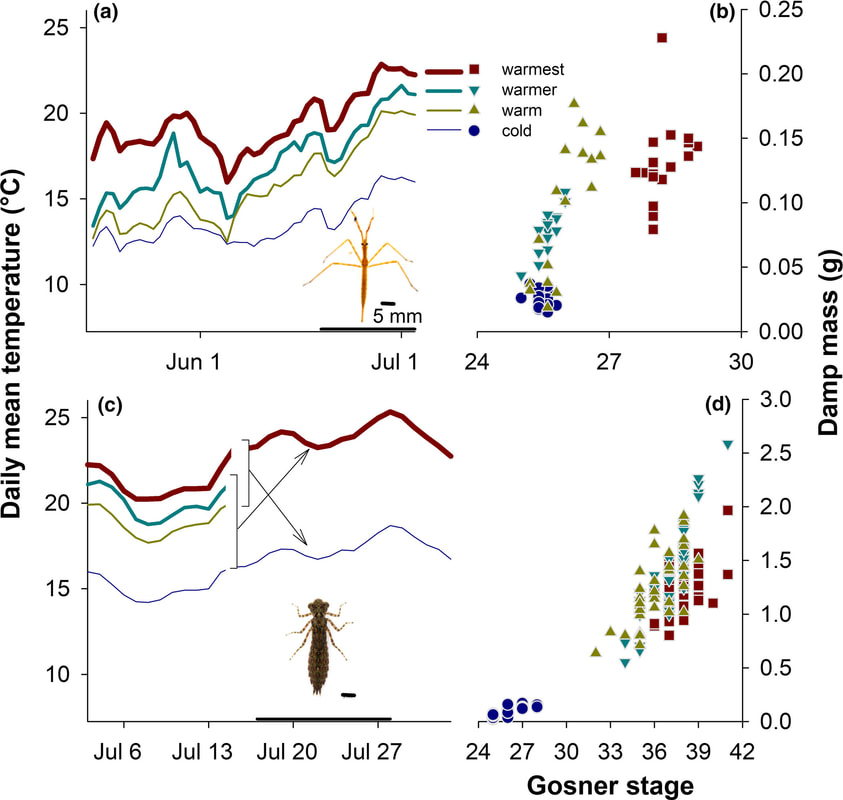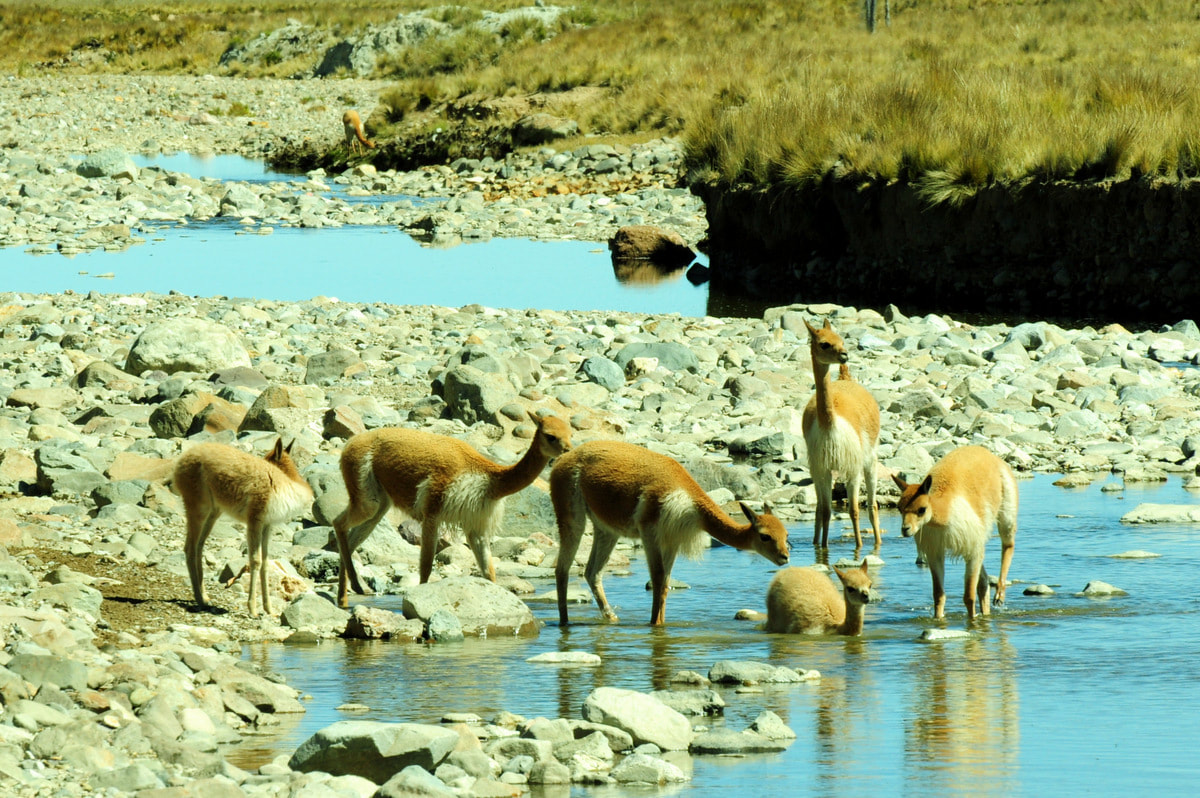
 After our contributions on tadpole thermal performance, we continued investigating the effects of dam-altered thermal regimes on river-breeding amphibians by looking at the consequences of hypolimnetic releases (cold water being released from the bottom of artificial reservoirs) for digestion, assimilation and vulnerability to predators of tadpoles. Our study Consequences of dam‐altered thermal regimes for a riverine herbivore's digestive efficiency, growth and vulnerability to predation, was a collaboration with Dr. Sarah Kupferberger and was published this week in Freshwater Biology. We again worked on the foothill yellow-legged frog, Rana boylii in California. At present, R. boylii occupies less than half its historic range, due to the existence of large dams in many river systems. During the springs and summers of 2008, 2009 and 2010 we monitored temperature conditions at many breeding sites of R. boylii in regulated (i.e., downstream of dams) and unregulated rivers in northern California (see sensor placed by a rock that was subsequently used as egg attachment site in the image above) to understand changes in thermal regime caused by hypolimnetic releases. We then mimicked the colder conditions existing downstream of dams in experimental settings and investigated how tadpole's digestive efficiency responded to lower temperatures. Finally, we exposed tadpoles of different sizes and developmental stages to natural odonate and hemipteran predators (see a Ranatra eating a tadpole in one of our experimental enclosures in the image below). Tadpoles reared in cold water had the lowest digestive efficiency of epilithic periphyton, albeit efficiency was ameliorated when tadpoles had access to highly nutritious dinitrogen‐fixing diatoms. However, these nutritious diatoms, which can be common in natural, unregulated rivers are often replaced by unpalatable, poorly nutritious periphyton downstream of rivers. In our experiments, growth rate of tadpoles correlated with assimilation efficiency, which is crucial for R. boylii because tadpoles need to metamorphose and get out of the water by the end of summer and before the fall rains cause deadly river floods. Low growth rate also affected tadpole survival, with small tadpoles much more likely to succumb to predation. Non‐lethal effects of predators on tadpole growth and tail injury, however, depended on both rearing temperature and exposure temperature. Contrary to the expectation that the cost of predator avoidance behaviours may be greater at warmer exposure temperatures because basal metabolic rates are higher, our results indicated that the energetic cost of foraging less was amplified at cool temperatures. Therefore, tadpoles growing in cold water face multiple, synergistic hurdles from lower assimilation efficiency and growth to increased predation by invertebrates, thus contributing to population recruitment bottlenecks.
0 Comments
The lab photo below won first place of the FIU Tropics Photo Contest! Young vicuña (Vicugna vicugna) taking a bath in a high-Andean creek at 13,000 feet. Vicuñas are the smallest of the four species of South American camelids, but they are highly prized because of the very fine fiber that can be produced with their wool. As a consequence of the high economic value of this fiber, vicuñas were driven to near extinction in the 1960s, until biologists promoted the sustainable management of wild populations in the high-Andes of southern Peru. One of the first and most successful project was conducted at Pampas Galeras in Ayacucho (shown in the photograph), today a national reserve honoring the memory of environmental journalist Barbara D'Achille.
|
Archives
June 2024
CATENAZZI LABNews from the lab Categories |



 RSS Feed
RSS Feed